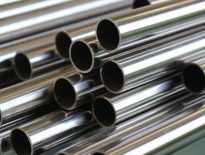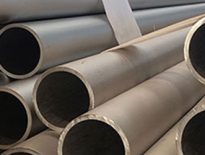Pipe – The construction of a pipe is round, which means the cross-section of the component is round and hollow in the center. These components are used in a piping system to distribute fluids including pellets, dust, gases, and fluids, or even steam. One of the very important distinguishing characteristics of pipes is their size. These dimensions include inside diameter or ID, outside diameter or OD, and wall thickness or WT. The wall thickness is also called the pipe schedule. Dimensions of a pipe help to the liquid capacity of the Stainless Steel Pipes. This can be determined by calculating the outside diameter minus 2 times the WT or the wall thickness (or program).
Tube – While a tube configuration is always round, the manufacture of tubes is possible in a variety of shapes, including round, rectangular, square, or oval. Similar to tubes, these components have dimensions such as outside diameter and weight, making them easier to order. The hollow section of pipe components is estimated from outside diameter or outside diameter, in combination with wall thickness or WT. The only difference between Stainless Steel Tubes and pipe is that for pipes, these dimensions are in inches or millimeters. The dimensions of the pipe often indicate the precise dimensional value of its hollow section.
Different types of Tubes
- Seamless steel tubes
- Welded Tubes
- Cold drawn tubes
- Precision tubes
- Hydraulics and pneumatics tubes
- Heat Exchanger Tubes
- Coiled Tubes
- Capillary tube
Difference between pipe and tube diameter
During placement of the order, it is possible to order, you can order a pipe with dimensions such as outside diameter and wall thickness. In addition, in a few instances, the order can also be positioned with dimensions like OD & ID and Wall Thickness. Generally, the ID or the internal diameter is theoretical, however, the wall thickness of a given tube has been described with the aid of using a gauge quantity. Smaller gauge numbers are related to having large outdoor diameters. On the alternative hand, the tube is ordered with the NPS standard, additionally, this system quantity and the amplifier; nominal diameter or pipe length need to be specified.
Pipe and tube production process
Similar to pipes, tubes may be produced with both seamless or welded construction. In addition, it is very difficult to manufacture a tube because the tolerances of the tubes are tighter. The manufacturer must therefore comply with all of them to meet the tolerances established by the standards or specifications. And because the manufacturing process of tubes entails a finished product, several parameters need to be reviewed, including test procedures, quality controls, and inspections.
Pipe and tube applications
While pipes are conventionally a part of systems that ferry across medium, the use of pipes is more specific for structural applications, such as scaffolding or fittings. Even though temporary structure, tubes may be used to support a work crew and materials to assist the construction, maintenance, or even repair of various structures, including bridges, buildings, and other man-made structures.


